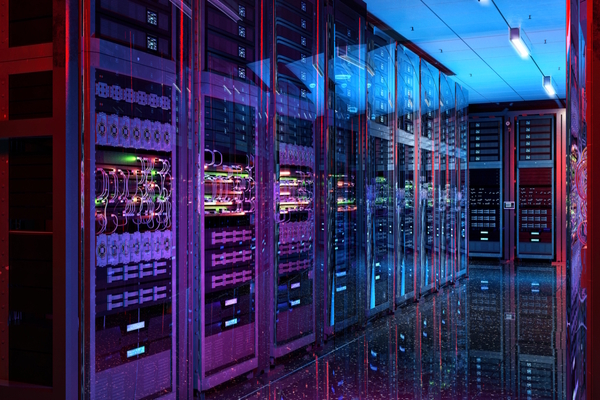Business resilience: taming complexity

Bob Wambach at Dynatrace argues that observability is the cornerstone of digital resilience
Recent outages have shown that a heavy reliance on digital systems can bring financial transactions to a halt, disrupt public transport and even shut down airport operations.
What separates a minor disruption from a major crisis is an organisation’s ability to quickly detect issues, understand their root cause and recover in real time. Traditional monitoring approaches, characterised by fragmented data and organisational siloes, have become outdated with the advent of complex environments fuelled by generative AI and agentic systems.
To build and maintain resilient, high-performing software, businesses now require comprehensive, AI-powered observability that delivers a unified and consistent view across the entire ecosystem. Modern enterprise environments are intricate, encompassing cloud-native architectures, multi-cloud strategies, external services, APIs and the rapid rise of AI technologies. This growing complexity creates blind spots across the software delivery pipeline, making it more challenging to manage performance, mitigate risks and ensure resilience at scale.
Uncovering vulnerabilities in software stacks
Today’s enterprises rely on a vast ecosystem of interconnected technologies. A single misconfigured update or a vulnerability in a widely deployed third-party agent can cascade across systems in minutes, impacting customer experience, operations and ultimately, business continuity.
Research shows that 42% of organisations anticipate experiencing an incident caused by one of their suppliers. Too often, teams are left flying blind when something goes wrong, which can be frustrating and costly.
To operate with confidence, businesses must understand any issues that emerge across their entire digital supply chain and be prepared to respond in real-time. Unlike traditional monitoring, which often focuses on siloed metrics or alerts, observability provides a unified, real-time view across the entire technology environment, enabling faster, data-driven decisions at scale. Implementing real-time,
AI-powered observability covers every component from infrastructure and services to applications and user experience.
Observability: a strategic choice
End-to-end observability is evolving beyond its current role in IT and DevOps to become a foundational element of modern business strategy. In doing so, observability plays a critical role in managing risk, maintaining uptime and safeguarding digital trust.
Observability also enables organisations to proactively detect anomalies before they escalate into outages, quickly pinpoint root causes across complex, distributed systems and automate response actions to reduce mean time to resolution (MTTR). The result is faster, smarter and more resilient operations, giving teams the confidence to innovate without compromising system stability, a critical advantage in a world where digital resilience and speed must go hand in hand.
Turning complexity into an enterprise strength
Resilient systems must absorb shocks without breaking. This requires both cultural and technical investment, from embracing shared accountability across teams to adopting modern deployment strategies like canary releases, blue/green rollouts and feature flagging.
Modern strategies only work if teams have real-time feedback and clarity, enabling organisations to understand what’s happening, why it’s happening and what to do about it before customers ever notice a disruption.
Agentic AI: new opportunities and challenges
As organisations increasingly adopt generative and agentic AI to accelerate innovation, they also expose themselves to new kinds of risks. Agentic AI can be configured to act independently, making changes, triggering workflows, or even deploying code without direct human involvement. This level of autonomy can boost productivity, but it also introduces serious challenges.
For example, a misconfigured agent or a malicious prompt can create far-reaching downstream consequences at machine speed. Small ripples can become waves, faster, broader and harder to contain.
Real-time, AI-driven observability platforms are essential, not just for monitoring what the agents do, but for understanding how they act, how they interact with other systems and when intervention is needed. Observability helps safely harness the potential of agentic AI and pave the way toward autonomous operations.
Be ready for the next disruption
The industry leaders of tomorrow must embrace emerging technologies like agentic AI but also understand and navigate the increased risks and regulatory demands that come with them. Success will depend on moving away from reactive firefighting toward preventive operations.
Real-time observability empowered by AI enables automated, accurate responses that eliminate the need for manual intervention to “flip the switch.” Organisations which invest in this kind of continuous, AI-driven insight can establish a foundation of trust, flexibility and ongoing innovation to help propel their business into the future.
Bob Wambach is VP, Portfolio & Strategy at Dynatrace
Main image courtesy of iStockPhoto.com and amgun

Business Reporter Team
You may also like
Most Viewed
Winston House, 3rd Floor, Units 306-309, 2-4 Dollis Park, London, N3 1HF
23-29 Hendon Lane, London, N3 1RT
020 8349 4363
© 2025, Lyonsdown Limited. Business Reporter® is a registered trademark of Lyonsdown Ltd. VAT registration number: 830519543





